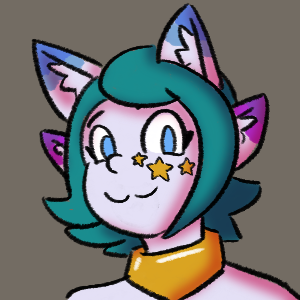Tretalleri
Tretalleri is the language of the tretâllë, which, traditionally, was constructed during the days of the enslavement of their ancestors by the Prophetess Llyrileýwa, as a means to circumvent the law that forbade them from speaking their mother tongue. The language has evolved and changed over time, becoming less and less a tool to preserve the tretalleri way of life, and more and more a symbol of the unity that the tretâllë have come to enjoy for themselves under the Dominion. It is the language in which all the most important state documents of the Dominion are written in and is the sole basis for the interpretation of Dominion law, not any translation thereof. Although it is not a requirement for all who work under the umbrella of the government, those who seek appointment to higher positions must be fluent in Tretalleri so as to understand the requirements of their jobs, as well as orders from higher up the hierarchy.1Priest: I ask all who are gathered today — Who is the Stranger? 2Congregation: He is Life. 3Priest: I ask again — Who is the Stranger? 4Congregation: He is Death. 5Priest: How can He be both? 6Congregation: For neither one can be without the other.1Di'Marrë: Qanë idë ormë têýnë mordenë vanto kiradana qarë idertë Di'Lertanys're 2Di'Averêni: Di'Teýna siltanë Di'Vaeýdë're 3Di'Marrë: Qanë idë fîtë retëne qarë idertë Di'Lertanys're 4Di'Averêni: Di'Teýna siltanë Di'Lertë're 5Di'Marrë: Qarë methi silnë Di'Teýna vinevi're 6Di'Averêni: Kirannë bila silnë nilvinë ζ sendë nilwydarmë're
Geographical Distribution
Phonology
Consonants
| Latinized Letter | IPA Pronunciation | Sound Name | (American) English Usage |
|---|---|---|---|
| b | /b/ | voiced bilabial plosive | bat |
| c | /s/ | voiceless alveolar fricative | sit |
| cs | /tʃ/ | voiceless palato-alveolar sibilant affricate | chest |
| d | /d/ | voiced alveolar plosive | dog |
| f | /f/ | voiceless labiodental fricative | fair |
| g | /ʒ/ | voiced post-alveolar fricative | genre |
| q / h | /h/ | voiceless glottal fricative | hit |
| j | /dʒ/ | voiced palato-alveolar affricate | jam |
| k | /k/ | voiceless velar plosive | kit |
| kh | /x/ | voiceless velar affricate | loch |
| l | /l/ | voiced alveolar lateral approximant | late |
| m | /m/ | voiced bilabial nasal | mate |
| n | /n/ | voiced alveolar nasal | nap |
| p | /p/ | voiceless bilabial plosive | pat |
| r | /ɾ/ | voiced alveolar flap | better |
| s... / ...s... | /ʃ/ | voiceless post-alveolar fricative | shape |
| ss / ...s | /s/ | voiceless alveolar fricative | sip |
| t | /t/ | voiceless alveolar plosive | tip |
| th | /θ/ | voiceless dental fricative | thigh |
| v | /v/ | voiced labiodental fricative | vine |
| w | /w/ | voiced labial-velar approximant | wine |
| ý | /jɪ/ | close front rounded vowel + near-close near-front unrounded vowel | yip |
| z | /dʐ/ | voiced retroflex affricate | dzah |
Vowels
| Latinized Letter | IPA Pronunciation | Sound Name | English Usage |
|---|---|---|---|
| a | /æ/ | near-open front unrounded vowel | cat |
| e | /ɛ/ | open-mid front unrounded vowel | egg |
| i | /i/ | close front unrounded vowel | tit |
| o | /ɔ/ | open-mid back rounded vowel | thought |
| u | /ʌ/ | open-mid back unrounded vowel | gut |
| y | /jɪ/ | close front rounded vowel + near-close near-front unrounded vowel | yip |






It seems you had a good time creating this language... I guess it will take a lot of time to create mine languages too. I like the fact that there is an insult specific to artpieces. It would probably be used to my article images :P